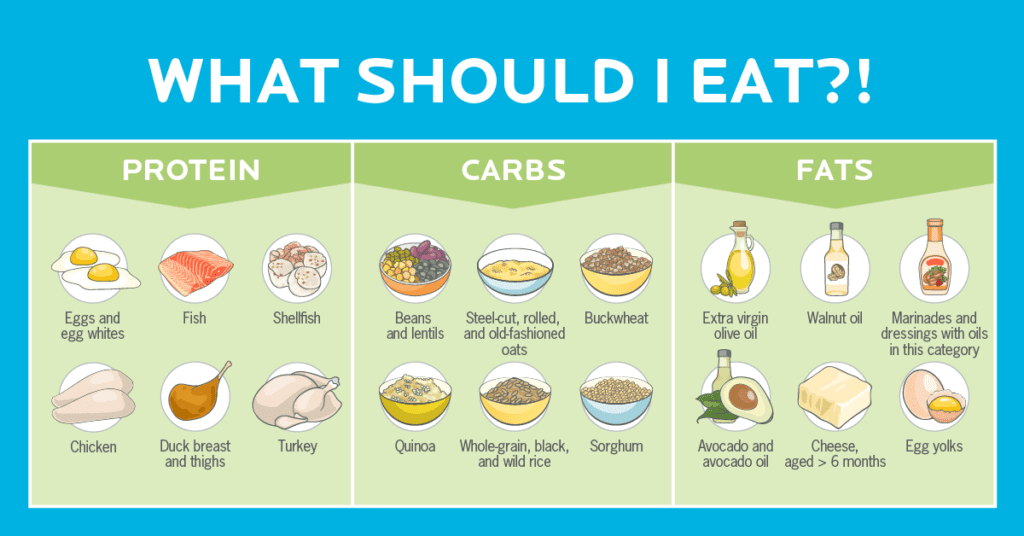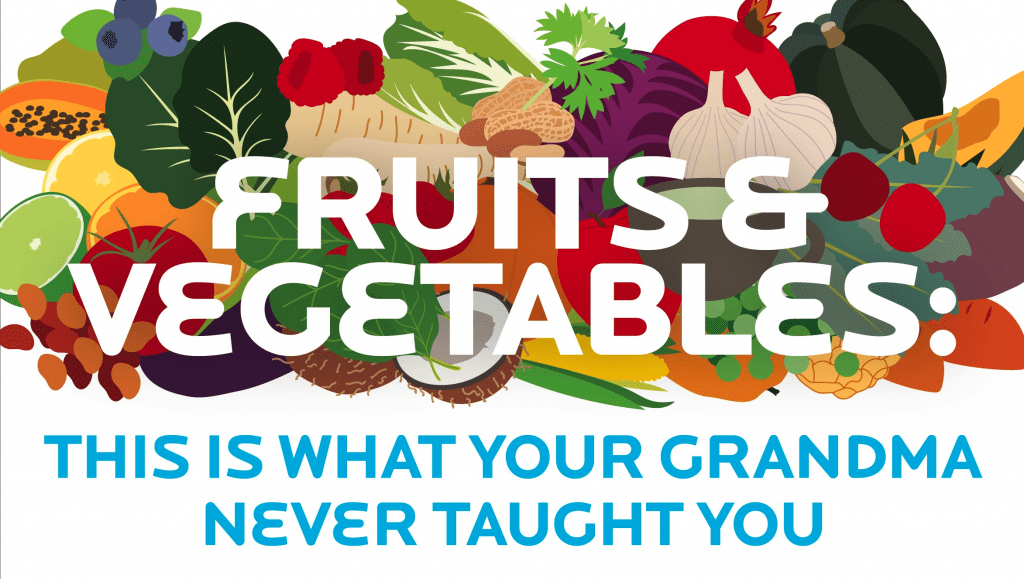Reviewed by Brian St. Pierre, MS, RD
There are so many ways to track your nutritional intake.
It can seem overwhelming to pick an (accurate) method that works for you.
That’s why we’ve developed the hand portion method.
It simplifies nutrition tracking in a way that’s accessible to anyone—and can suport any of your health and fitness goals.
A breakdown: The Hand Portion Method
Precision Nutrition’s hand portion method offers an easy solution to tracking your macros, allowing you to manage your food intake without weighing, measuring, or counting calories.
The method is simple: Estimate portion sizes with your hands.
It’s not about meticulous measurements—rather, it’s about using your hand as a reliable gauge for portion sizes.
What makes the hand portion method particularly effective is its inherent alignment with your body’s proportions. Plus, the size of your adult hand remains constant, ensuring consistency in portioning.
Here’s an overview:
- Protein: Your palm determines the size of your protein portion.
- Vegetables: Your clenched fist determines the size of your veggie portion.
- Carbohydrates: Your cupped hand determines the size of your carb portion.
- Fat: Your thumb determines the size of your fat portion.
Once you have an idea of what each portion looks like, you can aim to meet your personalized daily recommended balance of portions.
How many hand portions to eat
Most people will meet their nutritional needs by eating:
- 1-2 palms of protein-dense foods at each meal
- 1-2 fists of vegetables at each meal
- 1-2 cupped handfuls of carbohydrates at most meals
- 1-2 thumbs of fat-dense foods at most meals
Depending on your goals and frame, you may need to adjust these general recommendations up or down.
Benefits of the hand portion method
When it comes to tracking macros, the hand portion method offers several benefits:
- Accuracy with minimal effort: Our internal research shows that hand portion tracking is 95 percent as accurate as other tracking methods—but without the effort of meticulous measurement. Check out these results to see for yourself how well hand portion tracking works.
- Can be customized to your dietary preferences: Whether you follow a Mediterranean, Paleo, vegetarian, ketogenic, or fully plant-based diet, you can apply this method.
- Easy to manage macronutrient splits: With the hand portion method, you have the power to fine-tune your macronutrient split. Adjust the proportions of protein, carbohydrates, and fats to align precisely with your individual needs and objectives.
- Helpful tool for estimating calorie intake: Each hand portion is equivalent to an approximate amount of protein, carbohydrates, fat—and therefore calories. For example: 1 palm protein ~ 130-145 kcal; 1 fist of veggies ~ 25 kcal; 1 cupped hand of carbs ~ 110-120 kcal; and 1 thumb fats ~ 90-100 kcal.
Assumed variety of food choices
Our hand portion system assumes a mix of high-fat, moderate-fat, and low-fat protein sources; a mix of fruit, starchy tubers, beans, and whole grains for carbs; and a mix of fat-rich whole foods (such as nuts, cheese, or avocado), blended foods (such as pesto or nut butters), and pressed oils for fats.
And, the hand portion method can be adjusted to fit individual dietary preferences.
For example, if you’re following a ketogenic diet, you can simply increase your fat intake to make up for the decrease in carbohydrates.
Examples of the hand portion method: Approximate portion sizes for each macronutrient
Here are some examples of how much you’d eat using our hand portion method.
However, these are just approximations. The actual portion sizes will depend on the size of your individual hand and your body’s needs.
For men
A palm-sized portion of protein equals about 4 ounces of cooked meat/tofu, 1 cup of Greek yogurt or cottage cheese, 1 scoop of protein powder, or 2 whole eggs.
A fist-sized portion of vegetables is equivalent to about 1 cup of non-starchy vegetables such as spinach, carrots, cauliflower, or peppers.
A cupped hand of carbs is about ⅔ cup of cooked grains or legumes, 1 medium-sized fruit, or 1 medium tuber.
A thumb-sized portion of fat is around 1 tablespoon of oils, nuts, seeds, nut butter, avocados/guacamole, cheese, and dark chocolate.
For women
A palm-sized portion of protein equals about 3 ounces of cooked meat/tofu, 1 cup of Greek yogurt or cottage cheese, 1 scoop of protein powder, or 2 whole eggs.
A fist-sized portion of vegetables is equivalent to about 1 cup of non-starchy vegetables such as spinach, carrots, cauliflower, or peppers.
A cupped hand of carbs is about ½ cup of cooked grains or legumes, 1 medium-sized fruit, or 1 medium tuber.
A thumb-sized portion of fat is around 1 tablespoon of oils, nuts, seeds, nut butter, avocados/guacamole, cheese, and dark chocolate.
Approximate math for macronutrient portions
For number-oriented users, based on the examples above, these are the approximate macros each of the portions provide.
Macros for men’s approximate portions:
- 1 palm of protein ~ 24 g protein, 2 g carbs, 4.5 g fat, 145 kcal
- 1 fist of veggies ~ 1.5 g protein, 5 g carbs, 0 g fat, 25 kcal
- 1 cupped hand of carbs ~ 3 g protein, 25 g carbs, 1 g fat, 120 kcal
- 1 thumb of fats ~ 2 g protein, 2 g carbs, 9 g fat, 100 kcal
Macros for women’s approximate portions:
- 1 palm of protein ~ 22 g protein, 2 g carbs, 4 g fat, 130 kcal
- 1 fist of veggies ~ 1.5 g protein, 5 g carbs, 0 g fat, 25 kcal
- 1 cupped hand of carbs ~ 3 g protein, 22 g carbs, 1 g fat, 110 kcal
- 1 thumb of fats ~ 2 g protein, 2 g carbs, 8 g fat, 90 kcal
Please remember that these are approximations.
All aspects of calorie and macronutrient calculations are based on averages with known error rates.
Testing the accuracy of hand portion math
In the examples below, we’ll demonstrate that using the hand portion method is 95 to 100 percent as accurate as carefully weighing, measuring, and logging everything you eat.
Example 1
Our first example individual is a female athlete who weighs 135 pounds and has 18 percent body fat. She maintains a high activity-level, engaging in two training sessions per day. This is what she consumes in a day:
- Pre-workout @ 6 am: 16 oz of black coffee, 1 cup of plain low-fat Greek yogurt, 1 cup of chopped pineapple, 2 tbsp of chopped walnuts, 1 glass of water.
- Workout @ 7:15-8:30 am: Sips on 16 oz of water during the training session.
- Post-workout shake @ 9 am: 12 oz of water, 2 scoops of protein powder, 1 medium apple, 1/2 cup of old-fashioned oats, 2 cups of spinach, 1 tbsp of ground flax seed, 1 tbsp of almond butter.
- Lunch @ 12 pm: 3 oz of salmon, 1 cup of steamed mixed veggies, 1 medium sweet potato, 1 tbsp of coconut oil, 2 glasses of water.
- Mid-afternoon snack @ 4 pm: 1 banana, 2 tbsp of natural peanut butter, 1 glass of water.
- Workout @ 5:30-6 pm: Sips on 16 oz of water during the training session.
- Post-workout dinner @ 7 pm: 3 oz of chopped chicken breast, 2 cups of cooked whole grain pasta, plus 2 cups of sautéed veggies with 2 tbsp of extra virgin olive oil, minced garlic and white cooking wine, 2 glasses of water.
If you compute the calories and macronutrients of this person’s intake using the USDA nutrient database, you get:
- 2672 kcal
- 170 g protein
- 264 g carbs
- 104 g fat
And if you translate this person’s intake into hand-size portion terms, you get:
- Protein = 5 palms (Greek yogurt, protein powder x 2, salmon, chicken)
- Veggies = 5 fists (spinach x 2, mixed veggies, sautéed veggies x 2)
- Carbs = 10 cupped hands (pineapple x 2, apple, oats, sweet potato, banana, pasta x 4)
- Fats = 9 thumbs (walnuts x 2, flax seed, almond butter, coconut oil, peanut butter x 2, olive oil x 2)
By multiplying those portion numbers using approximate hand-portion math for women (refer to the section above), the estimated intake is:
- 2672 kcal (precisely the same as calculating it with apps and spreadsheets)
- 166 g protein (4 g less than calculating it with apps and spreadsheets)
- 273 g carbs (9 g more than calculating it with apps and spreadsheets)
- 102 g fat (2 g less than calculating it with apps and spreadsheets)
As you can see, the difference between manually tracking and using our hand portion method is a matter of only a few small grams.
Example 2
Our second example individual is a moderately active male who weighs 210 pounds and has 17 percent body fat. This is what he consumes in a day:
- Wake @ 5:30 am: 12 oz of black coffee
- Breakfast @ 7 am: 4 whole eggs with a large bunch of peppers, scallions, and mushrooms cooked in a large pat of butter, placed on a whole wheat wrap, with ~1 oz cheese, 1 cupped hand of black beans, and some pico de gallo, large glass of water, 12 oz black coffee.
- Super Shake @ 10:30 am: ~10 oz of water, 2 scoops of chocolate protein powder, 2 cups of spinach, 2 cups of frozen cherries, ~1 tablespoon cacao nibs, ~1 tablespoon of chia seeds.
- Lunch @ 2 pm: 4 oz of turkey breast, ~⅔ cup of quinoa, 1 fist of mixed veggies, 1 apple, 2 thumbs of roasted almonds, 1-2 large glasses of water.
- 1-2 cups of green tea @ 3-4 pm.
- Dinner @ 6 pm: 8 oz of sirloin (lean), 2 cupped hands of roasted red potatoes with onions, 2 cups of roasted rainbow carrots, 2 tbsp of olive oil for roasting, 1 glass of wine, 1-2 large glasses of water.
If you calculate the calories and macronutrients of this person’s intake using the USDA nutrient database, you get:
- 3130 kcal
- 212 g protein
- 283 g carbs
- 111 g fat
And if you put this person’s intake into hand portion terms, you get:
- Protein = 7 palms (eggs x 2, protein powder x 2, turkey, sirloin x 2)
- Veggies = 6 fists (scallions/peppers/mushrooms/pico, spinach x 2, mixed veggies, rainbow carrots x 2)
- Carbs = 9 cupped hands (wrap, beans, cherries x 3, quinoa, apple, potato x 2)
- Fats = 8 thumbs (butter, guacamole, cacao nibs, chia seeds, almonds x 2, olive oil x 2)
- Alcohol = 1 (wine)
When you multiply those portion numbers using approximate hand-portion math for men, the estimated intake is:
- 3183 kcal (53 kcal more than calculating it with apps and spreadsheets)
- 220g protein (8 g more than calculating it with apps and spreadsheets)
- 285g carbs (2 g more than calculating it with apps and spreadsheets)
- 113g fat (2 g more than calculating it with apps and spreadsheets)
Once again, the hand portion method is nearly as accurate as manually weighing and tracking portions—and much simpler.
We can help you meet your goals
Our Ultimate Macro Calculator can help you figure out the ideal macronutrient ratio for your specific nutrition and fitness goals. From there, our hand portion method can guide you along the road to success.







Share